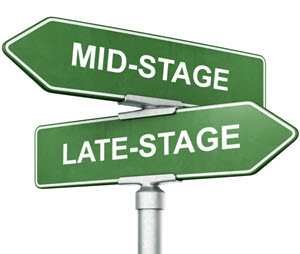These days it seems to me that you can’t read a marketing blog, attend a marketing conference, listen to a marketing podcast, without hearing someone drone on about the customer journey.
Suddenly, we are led to believe, the customer journey is all that matters. Lead nurturing, for example, must now coddle the buyer through every step of his/her journey to customer nirvana.

Well, not so fast.
Look, I’m all for the general notion of our marketing being more targeted, personalized, and relevant. And the more that your message and content reflect a prospect’s stage in the selling cycle, the better. However, amongst all the noise and preaching about the customer journey, two truths remain unchanged:
1. No two customer journeys are the same.
2. At any given time, you do not know where a given prospect is on that journey.
Now, to be fair, we certainly have a better understanding of the B2B customer journey today, and it’s certainly true that there are valid, credible insights that can be drawn about the way in which business buyers behave in the aggregate. For example, per SiriusDecisions, that 67 percent of that buyer’s journey now takes place online.
But does that mean that every buyer, for every product, conducts 67 percent of his/her research online? No it doesn’t, and nor would SiriusDecisions claim it does. What’s more, the timing, duration, and route through which one customer goes from lead to opportunity to deal almost certainly vary from the next, and the customer after that.
Secondly, do you really know where a specific prospect is in the buyer’s journey? Marketing nerds love to talk about mid-stage programs and late-stage content, and the like, but how do we really know? If Joe Prospect downloads a case study, is Joe further along in the sales cycle? If he visits 5 Web pages? If he attends a Webinar? Maybe, maybe not. The ugly reality is that, in all but the most extreme examples, activity is just that: activity. We data-driven marketers may want to assign meaning to that activity, whether page visits or email clicks or content downloads, but most of the time? We have no clue.
I write all this because in talking to demand generation marketers most days, it’s clear that the marketing powers-that-be have collectively drunk the customer journey Kool-Aid. And so we hear comments like the following:
“We want our nurturing program to reach the right person, at the right time, with content that reflects that person’s stage in the sales cycle.”
or my personal favorite:
“We want our campaign to take the prospect from awareness to consideration to purchase.”
Sorry, but no. Yes, we can look and watch for certain behaviors, and trigger automated communication based on those behaviors. Yes, we can segment our message and our offer content based on what we assume to be that prospect’s buying role and level of interest. But it’s still an educated guess. If we guess wrong, and we deliver late-stage content to someone who isn’t late stage, for example, then our message is not only irrelevant, it may do more harm than good.
A postscript:
All of this may and will change. We’re already seeing the impact of Big Data, and technologies like Predictive Analytics, that listen beyond simple Web visits and email clicks, and enable marketers to make better decisions on whether prospects are more or less likely to become customers. I can foresee a time, probably not in the too distant future, where by sifting through a combination of Web behavior, email engagement, social activity, account milestones, and a myriad of other factors (credit card data? weather patterns?), technology may indeed allow us to better pinpoint precisely where a prospect is on his/her journey. We are not there today, but we may be soon.

Very good points! Glad to have someone else talk reality.
These are excellent points, and I can’t necessarily disagree. But, what are we supposed to do in the meantime until this utopia of when we will be able to understand when a prospect is on the journey? Especially when as marketers, our C-suite is asking us to constantly demonstrate that we are creating value for the organization and helping sales? Sure, these metrics and nurturing programs may only be educated guesses, but that’s the key, isn’t it? Educated.
Sally:
Thanks for your comment (and loved you in Mad Men by the way.) Two responses:
1. I don’t think of this as an “all or nothing” proposition, and I didn’t mean to suggest that marketers shouldn’t attempt to communicate to prospects based on some guesstimate of where they might be on the selling cycle. I’m just advising caution, particularly against any program or campaign whose success rests on the assumption that we know exactly where someone is on his/her journey. News flash: we don’t.
2. Short of targeting our communication by selling stage, there’s a great deal to be gained in my view by segmenting by persona. In fact, if you asked me where a B2B marketer would likely see greater ROI – either by investing in segmentation by persona/function/role, or by selling stage, I’d say persona, definitively. At our agency, we’ve seen enormous gains – in conversion rates and other metrics – by clients who simply take the step of not communicating to their entire prospect base as if they were one homogeneous unit.
Regards,
Howard
“If you don’t like what’s being said, change the conversation”
– Don Draper